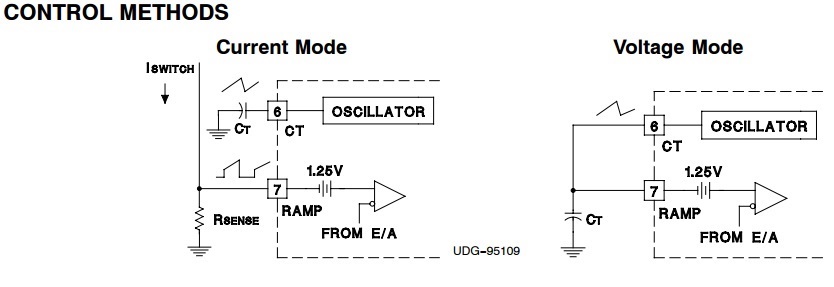Hi,
At the datasheet of the UC2823A, there are two control techniques defined as VMC and CMC.
At VMC, the RAMP pin is connected to the CT pin.
At CMC, there is a slope compensation loop and some filters.
I want to understand that what will determine to turn the MOSFET off at CMC and VMC. The design is a basic buck converter at CV output.
At normal operation and, does ILIM pin give decision as to turn the MOSFET off, when it sees 1V at ILIM pin. That means MOSFET will stay at turn-on condition until ILIM pin sees 1V
Or, the IC gives decisions to turn the MOSFET off by checking feedback information from output connected INV pin and comparing it to NI pin at PWM comparator and ILIM pin serves as such a protection and normal operation ILIM must be below 1V threshold.
At normal operation and CMC technique, does ILIM pin give decision as to turn the MOSFET off, when it sees 1V at ILIM pin. That means MOSFET will stay at turn-on condition until ILIM pin sees 1V
Or, the IC gives decisions to turn the MOSFET off by checking feedback information from output connected INV pin and comparing it to NI pin at PWM comparator and ILIM pin serves as such a protection and normal operation ILIM must be below 1V threshold.


